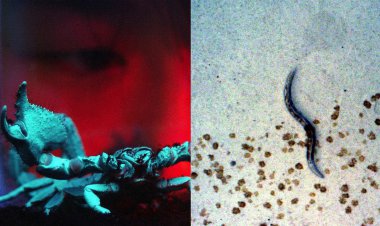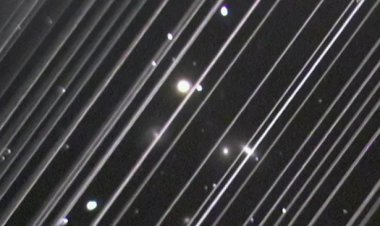Astronomers saw a rogue planet going through a rapid growth spurt
The growth spurt hints that the free-floating object evolves like a star, providing clues about rogue planets’ mysterious origins.

Researchers report in the Oct. 10 Astrophysical Journal Letters that a rogue planet some 600 light-years away has been experiencing a growth spurt, consuming gas and dust at a pace of 6 billion metric tons per second. Without orbiting a star, the planet has the quickest development rate of any planet, host star or not, and offers insights on the formation of free-floating planets.
Astronomers first spotted the young rogue planet, called Cha 1170-7626, in the southern hemisphere constellation Chamaeleon almost 20 years ago. The object, estimated to be five to 10 times as massive as Jupiter, was packing on the pounds by sucking up material from a surrounding disk of gas and dust, says astronomer Victor Almendros-Abad of the Palermo Astronomical Observatory in Italy.
He and his colleagues wanted to investigate the evolution of rogue planets, which may have formed around host stars like standard planets and then been flung from their homes, or formed in isolation from collapsing gas clouds like stars do.
Earlier this year, the researchers looked at ultraviolet, visible and infrared light emitted by Cha 1170-7626 and its surrounding disk using the Very Large Telescope, or VLT, in Chile. Observations in April and May revealed an expected growth speed. But the light signatures in late June hinted that the rogue planet had suddenly become gluttonous, quickly pulling in a stream of material along its magnetic field.
Additional data from the VLT and the James Webb Space Telescope taken in July and August helped the team estimate that Cha 1170-7626 was accumulating matter up to eight times faster than it had just a few months prior. The planet’s surface and surrounding gas and dust also became hotter and brighter, and the disk showed signs of water vapor that weren’t seen in earlier observations.
Many properties of the gluttonous period — especially its long duration of late June through August — resemble those of a rare type of growth spurt previously seen only in young stars, suggesting that the rogue planet had a starlike birth. Moreover, data from 2016 hint that Cha 1170-7626 binges on a regular basis, the researchers found.
Almendros-Abad will attempt to observe the solitary planet again later this year to ascertain whether it continues to accumulate mass.But one discovery itself doesn’t tell you much about the big picture,” he says. The team aims to catch more rogue planets during gluttonous periods to assess how often and for how long these events occur.






















